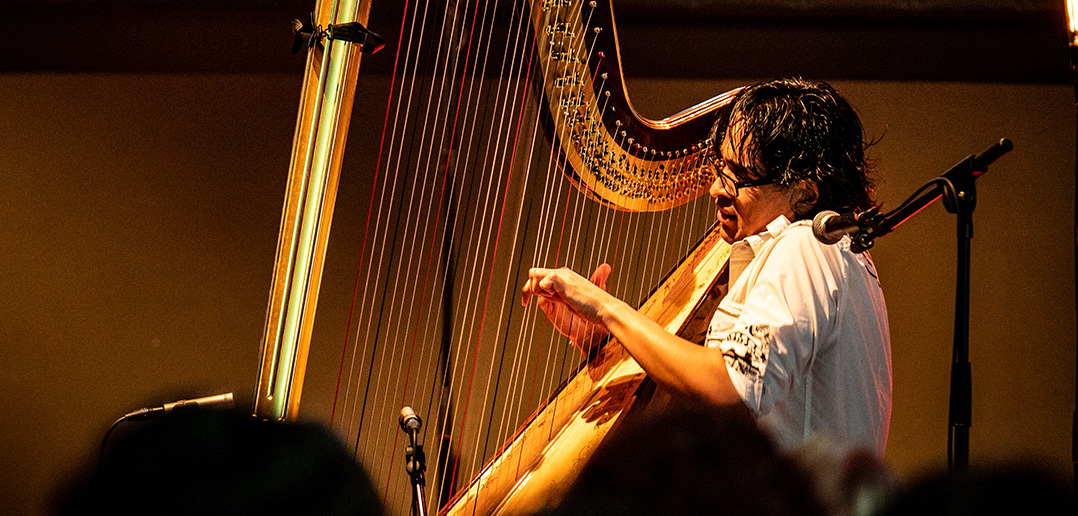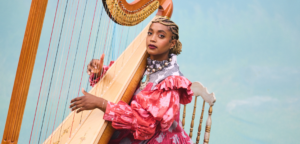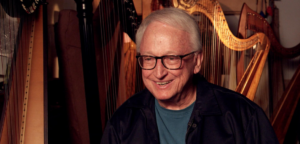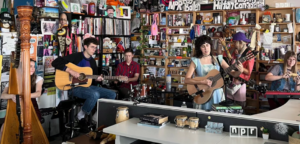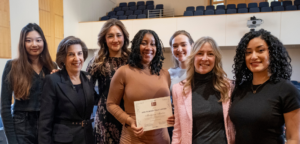César Secundino of Mexico recently snatched first prize in the DHF World Harp Competition, presenting an original program of arrangements entitled “Around the World in 47 Strings.” Introducing himself as the pilot of a Boeing 747 harp, he first distributed flight tickets and passports to all members of the audience – each page featuring a visa and program notes from a different country – before taking listeners on a musical world tour. Harp Column correspondent Elizabeth Jaxon caught up with Secundino in Utrecht, following the competition, to find out more about the man behind the gold medal.
Congratulations! Did you expect that you were going to win?
No, I didn’t expect it at all. It was really surprising for me. I’m really happy! Normally when I play competitions, my goal is just to learn. It’s a chance to hear really good harp players. Sometimes the jury even plays, and it’s a good experience to go to their concerts.
What did you learn from this competition?
First of all, the Netherlands was a new place for me. Dutch is a very different language – hard to understand – but it was cool because almost everybody speaks English here. The experience of being here and playing was amazing. I got to meet people whom I normally would only see on YouTube – like Edmar Castañeda, Remy van Kesteren, and you… It was really worthwhile and amazing experience.
How was this competition different from others you’ve done before?
As soon as I saw the promotional video for the competition I knew it was something for me. Most competitions are for classical players, but this is the competition for people who are doing something different, like, for instance, Pia Salvia. Pia gave an amazing performance [of her own music with drums and electric bass]. That kind of performance doesn’t usually fit in a harp contest. So this competition is a great opportunity for us. There are almost no rules; you can decide on your own program and play whatever you want. The only thing you need to do is be creative!
You are very creative in your approach to the harp, the way you combine very different playing techniques into your own style. Tell me about your musical background.
I started to play harp when I was 19 years old. Before that, I played the guitar a bit, but just chords. It was very difficult to take up harp where I was living because it was far away from Mexico City. I started on the Mexican folk harp, which I played for one year, until I decided I really liked the instrument, and then I moved to the pedal harp. I soon realized, though, that I had started too late to master the straight classical technique that my teachers were offering and that I would need to do something different. Take Aimee [Hang Yu Lam] for instance; she’s only 14 years old, and she already plays amazingly! When I was 14, I didn’t even know the harp.
Your technique is still pretty amazing!
But it’s not very classical technique. Sometimes I play with my nails because it’s easier and faster. I also do a lot of effects with the harp – knocking the soundboard, etc. That’s what I like to do! It’s cool to reach a high technical level, but you need to put in a lot of work. I’m too lazy [laughs]! I did study classical performance. I went to the Conservatory of Aragon in Spain, where I played Renié, Parish-Alvars… But whenever I would go to a masterclass, the teacher would always tell me, “You need to correct your technique!” And every time I switched teachers, they would have me start all over again. I finally decided, “No, this is not working – I have do something different.”
I really enjoyed your program. Did you create the concept specifically for the competition?
My programs usually include a mix of classical repertoire with jazz or my own compositions. But for the DHF World Harp Competition I focused on world music and billed myself to the festival as an arranger. I did only my own arrangements – some classical, some latin jazz, some tango, some Mexican rhythms. Usually we play music from other people that’s already written, so I was trying to do something new. In my arrangements, sometimes I change the harmony, or I change the rhythm. My intention was to show all the possibilities of the harp.
Have you written down your arrangements?
Yes! For instance, I wrote my tango arrangement because an Italian harp player came to me and told me she wanted to learn to play Tango like I do. I wrote the arrangement for her, and you can see her play it on YouTube.
Where do you see your career headed over the next couple years?
I want to keep playing, of course, and keep learning. I got my master’s degree studying jazz at Berklee, and since then I’ve been composing jazz music mixed with other styles, like tango. I love harmony – it’s my favorite subject – so I want to learn more theory to improve my instrument. As a student, I was frustrated to find that even though there are many harpists who play jazz, almost nobody teaches it. There’s not really a place to go, as a harpist, to learn to play jazz. There’s Park and Felice, but not everybody has the option of studying with them. Tuition for Berklee is very expensive. It is not easy to learn jazz as a harpist. I mostly learned from pianists, guitarists, and percussionists, and I transpose the theory to my instrument. That is why for my master’s degree thesis I created a method, “An Approach to the Pedal Harp Improvisation,” to show how the harp works harmonically. The method relates jazz harmony to the harp and shows how improvisation can work on the harp. I would eventually like to establish myself as a teacher, to share what I know with other harpists.
What do you do when you’re not playing the harp?
Taking care of my two children! My daughter is five years old, and my son is three. When I’m not playing the harp, I’m spending time with them. My son plays the drums, which he loves. My daughter is more into ballet. She actually won a prize and will be going to represent Mexico in Dallas [Texas] in a ballet competition this coming July. She’s a really great dancer. My life is mostly the harp and my children.
Photo by Nathan Reinds





